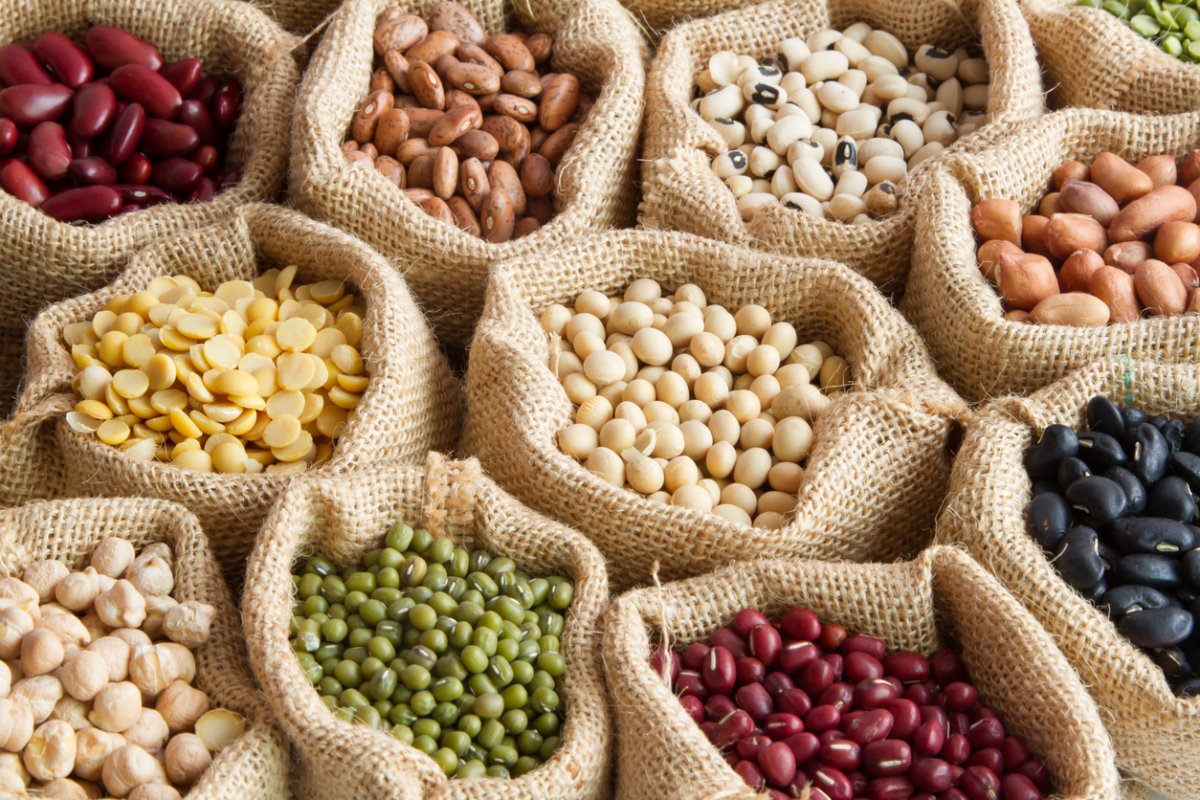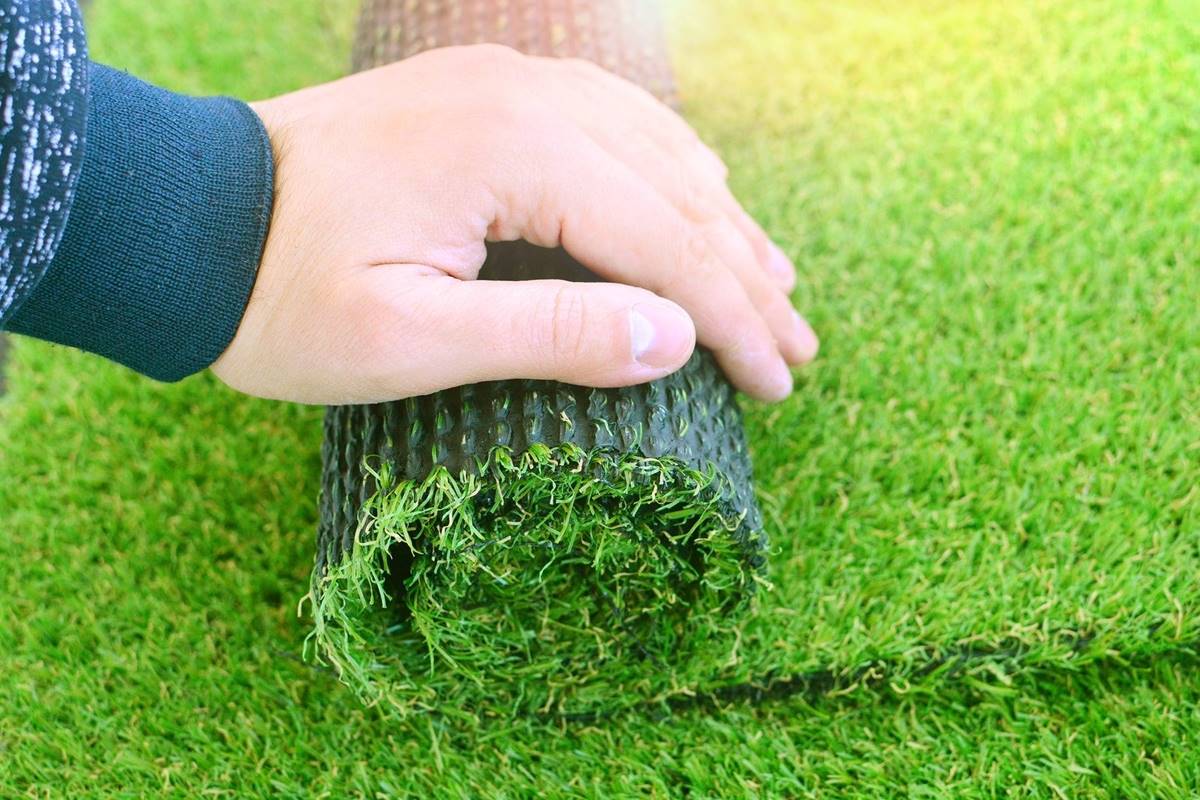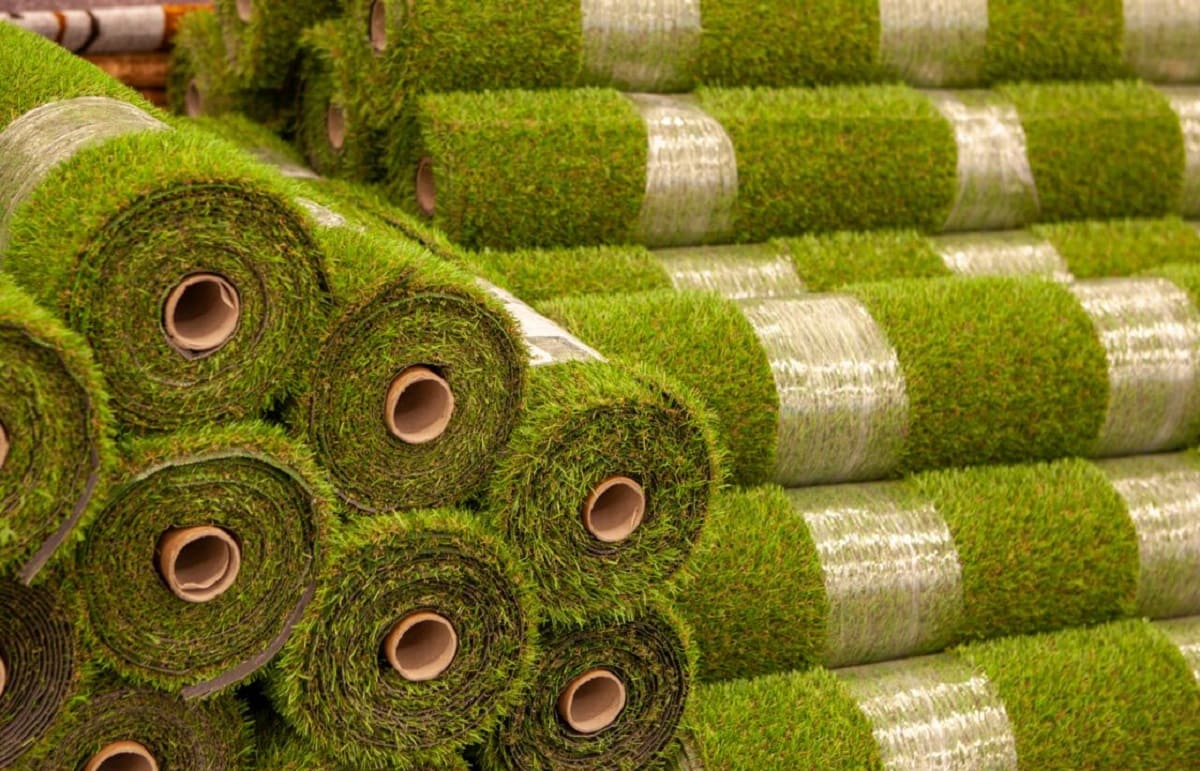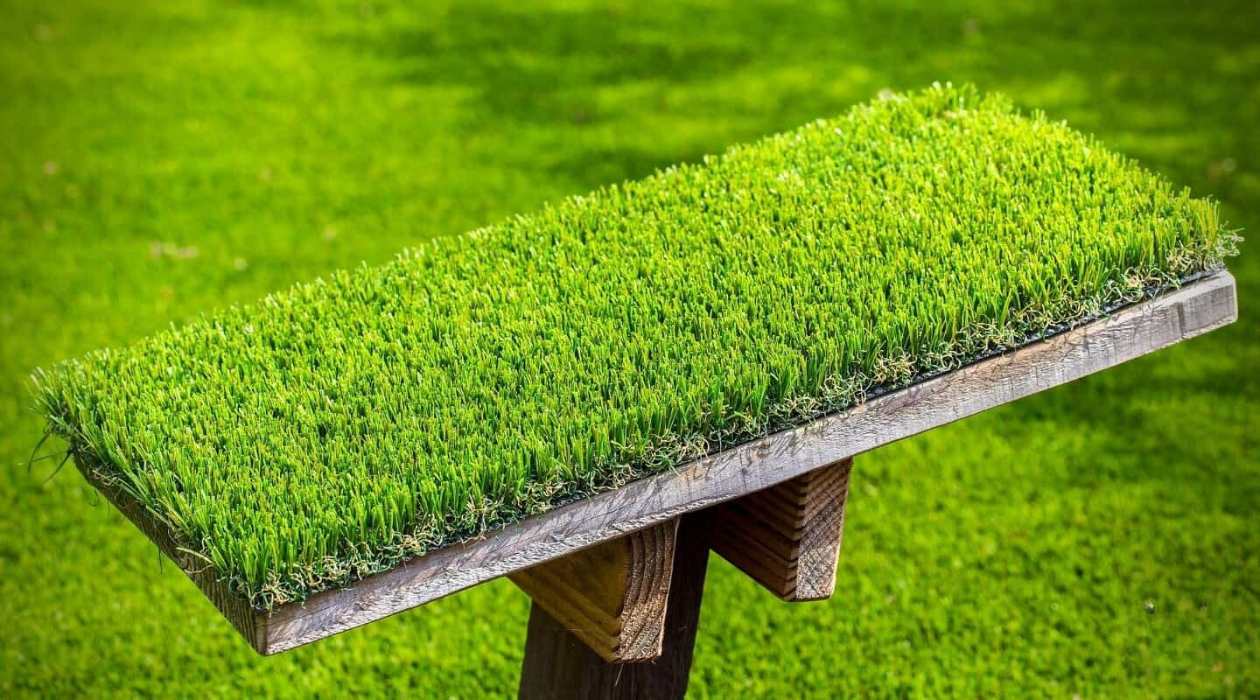Home>Gardening & Outdoor>Landscaping Ideas>What Is Grass Made Out Of


Landscaping Ideas
What Is Grass Made Out Of
Modified: March 28, 2024
Discover the essential elements of grass and get expert landscaping ideas to help you create a lush and vibrant outdoor space. Explore what grass is made of and how to enhance your landscape.
(Many of the links in this article redirect to a specific reviewed product. Your purchase of these products through affiliate links helps to generate commission for Storables.com, at no extra cost. Learn more)
Introduction
Grass is an integral part of our natural surroundings, adorning landscapes and providing nourishment for a variety of creatures. Its lush greenery and soft blades are a familiar sight, but have you ever pondered the intricate details of what grass is made of? In this article, we will delve into the fascinating world of grass, exploring its structure, chemical composition, nutritional value, and ecological significance. By gaining a deeper understanding of the components that make up this ubiquitous plant, we can develop a newfound appreciation for the essential role it plays in our environment.
So, let’s embark on a journey to uncover the secrets of grass, from its physical makeup to its ecological impact. Prepare to be amazed by the complexity and significance of this seemingly humble plant!
Key Takeaways:
- Grass is more than just greenery – it’s a vital part of nature, with a complex structure and chemical makeup that supports the health of ecosystems and the creatures within them.
- Grass isn’t just for lawns – it’s a powerhouse of nutrients for animals, a protector of soil, and a key player in maintaining the balance of life on Earth.
Read more: What Is Trex Decking Made Out Of
The Structure of Grass
At first glance, grass may appear to be a simple and uniform entity, but upon closer inspection, its structure reveals a remarkable level of complexity. Grass consists of various components that contribute to its overall form and function.
The most visible part of grass is the blade, which is the flat, elongated leaf that extends from the stem. These blades can vary widely in size, shape, and texture, depending on the specific species of grass. Some grass species have broad blades, while others have narrow, wiry ones. Additionally, the blades may be smooth or have fine hairs, adding to the diversity of grass structures.
Beneath the soil surface, grass roots play a crucial role in anchoring the plant and absorbing water and nutrients from the soil. The root system of grass is typically fibrous, consisting of numerous thin, branching roots that spread out horizontally. This extensive network allows grass to effectively extract essential resources from the soil, contributing to its resilience and ability to thrive in diverse environments.
Furthermore, the stem of grass, also known as the culm, provides structural support for the plant and facilitates the transport of water and nutrients between the roots and the leaves. The arrangement of stems can vary among different grass species, with some forming dense, compact tufts and others spreading out to form sprawling mats.
Additionally, grass may produce flowers, which are often small and inconspicuous. The flowering structures of grass, known as inflorescences, can take various forms, such as spikes, panicles, or racemes. While the visual appeal of grass flowers may not rival that of ornamental blooms, they serve a vital function in the plant’s reproductive cycle, ultimately contributing to the perpetuation of grass populations.
Overall, the structure of grass encompasses a diverse array of components, each contributing to the plant’s resilience, adaptability, and ecological significance. By understanding the intricate makeup of grass, we can gain a deeper appreciation for its role in the natural world.
The Chemical Composition of Grass
Beneath the verdant facade of grass lies a complex chemical composition that underpins its growth, development, and ecological interactions. Understanding the chemical makeup of grass provides insight into its nutritional value and environmental impact.
Grass primarily consists of water, making up a significant portion of its overall composition. This high water content contributes to the succulence and hydration of grass, essential for its growth and vitality. Alongside water, grass contains a diverse array of organic compounds, including carbohydrates, proteins, lipids, and nucleic acids.
Carbohydrates, such as cellulose, hemicellulose, and sugars, are fundamental components of grass, providing structural support and serving as a source of energy for various organisms. Cellulose, in particular, forms the bulk of the plant cell wall, contributing to the rigidity and resilience of grass tissues. Hemicellulose complements cellulose in providing structural integrity, while sugars serve as readily accessible energy sources for both grass and the creatures that consume it.
Proteins are vital constituents of grass, playing essential roles in growth, repair, and defense mechanisms. Grass proteins are composed of amino acids, the building blocks of proteins, and they are crucial for sustaining the health and vigor of the plant. Additionally, lipids, including fats and oils, contribute to energy storage and membrane structure within grass cells, further enriching its chemical composition.
Moreover, nucleic acids, such as DNA and RNA, are integral to the genetic information and cellular processes of grass. These complex molecules govern the growth and development of the plant, as well as its interactions with other organisms within the ecosystem.
Furthermore, grass contains an assortment of micronutrients, including vitamins, minerals, and phytochemicals, which contribute to its nutritional value and ecological significance. These compounds play diverse roles in the health and functionality of grass, as well as in the well-being of the organisms that rely on it for sustenance.
By unraveling the chemical composition of grass, we gain a deeper appreciation for its intricate nature and the essential role it plays in sustaining life within the natural world. The interplay of these chemical components forms the foundation of grass’s ecological importance and nutritional value, highlighting its significance in the broader ecosystem.
Grass is made up of mostly water, along with cellulose, hemicellulose, lignin, and proteins. These components give grass its structure and make it a valuable food source for many animals.
The Nutritional Value of Grass
While grass is often associated with lawns and grazing pastures, its nutritional value extends far beyond mere aesthetic or agricultural purposes. Grass serves as a vital source of sustenance for a diverse array of creatures, from herbivorous mammals to insects and microorganisms. Understanding the nutritional content of grass sheds light on its role in supporting the health and vitality of various organisms within the ecosystem.
Grass is rich in essential nutrients, making it a valuable food source for herbivores. It provides a balanced combination of carbohydrates, proteins, fats, vitamins, and minerals, contributing to the overall well-being of animals that consume it. The high fiber content of grass, primarily in the form of cellulose and hemicellulose, supports digestive health in herbivores, aiding in the breakdown of plant material and the absorption of nutrients.
Furthermore, grass contains a range of vitamins, including vitamin A, vitamin C, and various B vitamins, which are essential for the metabolic processes and overall health of herbivorous animals. These vitamins play crucial roles in maintaining vision, immune function, and energy metabolism, among other physiological functions.
In addition to vitamins, grass provides an assortment of minerals, such as calcium, magnesium, potassium, and phosphorus, which are vital for skeletal health, muscle function, and overall physiological balance in herbivores. These minerals contribute to the strength and resilience of herbivorous animals, supporting their growth and development.
Moreover, the protein content of grass, though varying among different species and growth stages, offers a source of essential amino acids for herbivores. These amino acids are the building blocks of proteins, crucial for muscle development, tissue repair, and various physiological processes within herbivorous animals.
Grass also serves as a foundational food source for insects and microorganisms, forming the base of complex food webs within ecosystems. Insects, such as grasshoppers and caterpillars, feed on grass, in turn becoming prey for a variety of other organisms, including birds and small mammals. Additionally, microorganisms in the soil break down decaying grass material, contributing to nutrient cycling and soil fertility.
By recognizing the significant nutritional value of grass, we gain a deeper understanding of its role in sustaining diverse populations within the natural world. Grass serves as a cornerstone of ecological food chains, providing essential nourishment for a multitude of organisms and contributing to the overall balance and biodiversity of ecosystems.
The Importance of Grass in the Ecosystem
Grass plays a multifaceted and indispensable role in supporting the health and functionality of diverse ecosystems, exerting far-reaching impacts on the environment, wildlife, and human societies. Its pervasive presence and ecological significance underscore the vital importance of grass within natural landscapes and agricultural systems.
One of the primary ecological functions of grass is its role in soil conservation and stabilization. The extensive root systems of grass plants help prevent soil erosion by anchoring the soil and reducing the risk of sediment runoff. This is particularly crucial in areas prone to erosion, such as hillsides and riparian zones, where grasses act as natural barriers, safeguarding the integrity of the soil and preserving valuable topsoil.
Moreover, grass contributes to the cycling of nutrients within ecosystems, playing a key part in nutrient retention and recycling. As grasses grow and senesce, they release organic matter into the soil, enriching it with essential nutrients and fostering microbial activity. This organic material serves as a vital resource for soil-dwelling organisms and contributes to the overall fertility and productivity of the ecosystem.
Grass also serves as a critical habitat and food source for a wide array of wildlife, including herbivorous mammals, birds, insects, and small mammals. Grasslands provide essential foraging grounds for herbivores, supporting diverse populations of grazing animals. Additionally, grasses offer nesting sites and protective cover for birds and small mammals, contributing to biodiversity and ecological balance within terrestrial ecosystems.
Furthermore, grasslands contribute to carbon sequestration and climate regulation, playing a role in mitigating the impacts of climate change. The extensive root systems of grasses store carbon in the soil, helping to offset greenhouse gas emissions and stabilize atmospheric carbon levels. Additionally, grasslands contribute to local climate regulation by reducing surface temperatures through transpiration and shading, thereby mitigating the urban heat island effect.
In agricultural systems, grass serves as a staple feed for livestock, supporting the production of meat, milk, and other animal-derived products. Grasslands also play a crucial role in sustainable livestock management, offering grazing opportunities and contributing to the overall resilience and productivity of pastoral systems.
Moreover, grasslands contribute to the aesthetic and recreational value of natural landscapes, providing picturesque settings for outdoor activities, wildlife observation, and nature-based tourism. The scenic beauty and ecological richness of grasslands attract visitors and foster a deeper connection to the natural world.
By recognizing the multifaceted importance of grass in ecosystems, we can appreciate its far-reaching impacts on environmental sustainability, biodiversity, and human well-being. Grass stands as a cornerstone of ecological resilience, contributing to the intricate web of life that sustains our planet.
Read more: What Is Brick Made Out Of
Conclusion
As we conclude our exploration of grass, it becomes evident that this seemingly unassuming plant holds a wealth of complexity and significance within the natural world. From its intricate structure to its diverse chemical composition, grass embodies resilience, adaptability, and ecological importance.
Grass, with its blades swaying in the breeze and roots delving deep into the soil, serves as a fundamental component of terrestrial ecosystems, contributing to soil stability, nutrient cycling, and wildlife habitat. Its role in carbon sequestration, climate regulation, and sustainable agriculture underscores its far-reaching impacts on environmental sustainability and human livelihoods.
Furthermore, the nutritional value of grass extends beyond its role as livestock feed, providing essential sustenance for herbivores and forming the foundation of complex food webs within ecosystems. Its high water content, diverse array of organic compounds, and micronutrient richness support the health and vitality of a multitude of organisms, from grazing mammals to soil-dwelling microorganisms.
Grasslands, with their sweeping vistas and diverse flora and fauna, offer not only ecological benefits but also aesthetic and recreational value, enriching our connection to the natural world and fostering a deeper appreciation for the beauty and complexity of the landscapes they adorn.
By understanding the intricate makeup and ecological significance of grass, we gain a newfound appreciation for the essential role it plays in sustaining life within the natural world. From the humble blades of grass to the sprawling meadows and savannas they form, grass stands as a testament to the resilience and interconnectedness of ecosystems, offering a glimpse into the intricate web of life that sustains our planet.
As we continue to cherish and protect the grasslands that grace our planet, let us remember the profound impact of this humble plant and the myriad ways in which it enriches and sustains the intricate tapestry of life on Earth.
Frequently Asked Questions about What Is Grass Made Out Of
Was this page helpful?
At Storables.com, we guarantee accurate and reliable information. Our content, validated by Expert Board Contributors, is crafted following stringent Editorial Policies. We're committed to providing you with well-researched, expert-backed insights for all your informational needs.















0 thoughts on “What Is Grass Made Out Of”